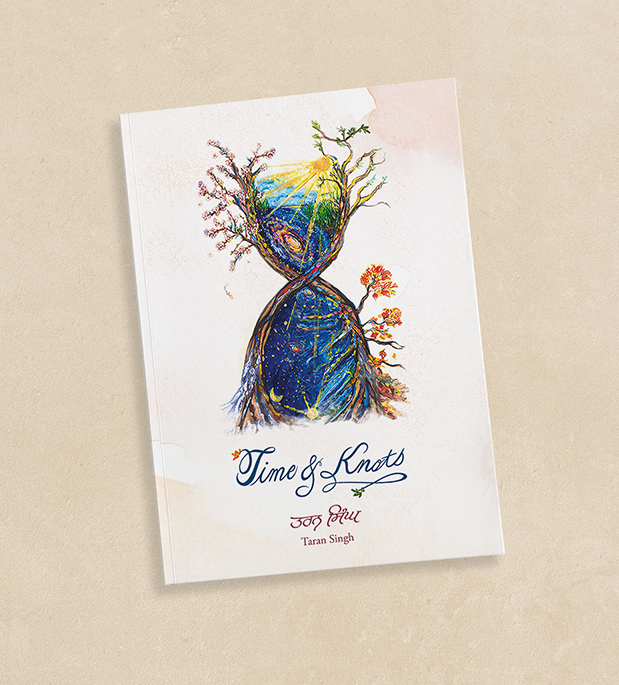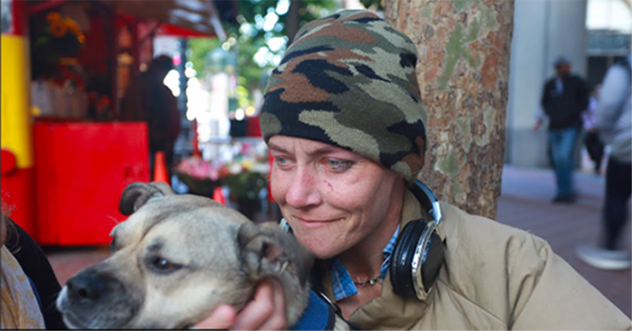Audio
Our Team

Taran Singh
Author

Eryn Michel
Audio Artist

Patricia Oliveira
Book Designer

Renata Cuellar
Cover Illustration

Hannah V Warren
Senior Editor

Ryane Acalin
Cover Designer
REVIEWS
“A TRANSPORTATIONAL EXPERIENCE” : By Hannah V. Warren
With his debut collection of poetry, Taran Singh creates a transportational experience for his readers—no matter where you are or what season you’re in, Singh’s poetry will take you to any season with his keen imagery. Just like the saguaro, Singh’s summer poetry is “a million thorns throng our flesh.” His other seasonal sections weave together the thrum of fall, the bite of winter, the new pulp of spring in order to cleave personal experience and, above all, the necessity of social connection. In other words, Singh clearly depicts what it means to live in time, which is the culminating theme of his collection: discovering and interrogating the structural integrity of time and human-crafted constraint.
Perhaps the most riveting part of this collection is the narrative string that carries the reader throughout the experience of a family. At times, the voice seems child-like—innocent and mobile—while at other the voice is reflective. Jarringly, the narrator switches pronouns and points of view, utilizing I, we, you, and he—all appearing to mirror the voice of the same person, which allows the reader to gain multiple perspectives on this character’s life. Through the narrative I, the speaker tells us, “[My mother] keeps me mesmerized with her mountain spirit.” This first-person present description of the mother grounds the reader is the speaker’s mind, providing a close glimpse of what it means to be the child of “Heera.”
Utilizing past versus present as a method of framing and continuing the narrative I, Singh further shows what parenthood means for his speaker. Singh writes, “As a kid, I walked the suspended paths / left hand fingers running on the rail / right hand firm in father’s soft palm.” Then, lines later, “Now the little fingers clasp them, a girl to her father, / her love and trust in seasoned grip.” Singh’s use of time indicators—with words such as now, the shifting of point of view, and his use of altering verb tenses—ties into his larger use of time as a constructed change. Above all, this poetry forces the reader to reflect on how time alters the world.
Let this collection of poetry serve as memoir. Let it serve as a reminder that we contain ourselves in glass boxes. Let it serve as a call to arms for memory, a glimpse into how time stretches beyond this moment and this one and this one. Most of all, let this poetry serve as entry into a spine-chilling narrative of survival in a world that must end.
“THE PERFECT TOOL TO OPEN YOUR MIND TO OTHER POSSIBILITIES.” : By Nia Howard
What do we really know about time? Perhaps we’ve decided that it is, in fact, a construct. But because we are not immortal, because we have a beginning and end, we must still operate under this concept we’ve created. What does that mean, then, for us? For the lifestyles, we choose to live, for the ones we’re born into, for our relationships—both the ethereal beginnings and the bitter ends? Do we have time to change; do we have time for change?
In Time & Knots, Taran Singh explores these concepts of time and challenges our notion of the status quo. By dividing his lyric verse and stunning imagery into sections: Summer, Autumn, Winter, Spring (be careful not to judge a poem by its section; it may not mean what you think), Singh captures the rise and fall of an ordinary life, suggesting that maybe time itself is a series of beginnings and endings that don’t necessarily mean “The End.”
Working with Taran and witnessing a portion of this book’s evolution was such a pleasure, and hearing him speak about what he’s already come to learn over the course of his life so far is more than impressive. But it’s not for fame or for the recognition. This book is meant to extend that knowledge—to pose questions and prompt others to think about whether time is unforgiving, or in fact, the complete opposite.
We don’t know—we will never know—the extent of time until we reach the end as we know it. Because of this, it’s important for us to do with it what we can. Let’s appreciate this journey, ride the ups and downs like waves, and emerge from the other side all the better for reflecting on the process. And how do we do that? By learning and expanding our sense of this construct and by helping others do the same.
Time & Knots is the perfect tool to open your mind to other possibilities. No, it is not some otherworldly reflection that proposes to know the secrets and inner workings of life. It’s not the answer or the secret to our breath’s meaning. But wouldn’t it be pretty to wonder… to ask yourself: “What if there’s more?”
That’s all I would ask of you—to take whatever chances you have to wonder and to ask questions, because those questions are your sunlight, and that curiosity is your water. They’re your gateways to growth. And, so far as we can say, isn’t that what life is really all about?
“STRIPS THE CONCEPT OF LINEAR TIME AWAY ENTIRELY” : By Lisa Favicchia
Time & Knots is a collection which exists utterly outside of time. In one moment deeply personal and aloof in the next, these poems never fail to penetrate the mind and offer both an in and an escape for us readers who must experience time linearly. Singh moves the reader through each season, revealing fluctuations in both nature and human nature; how we are affected by one another and our surroundings. Using the frame of the seasons as a backdrop, in addition to the inescapable nature of the poems themselves, Singh has created a truly immersive work which portrays time and our existence as both cyclical and endless.
Summer holds a premonition of fall, warmth that is tense with the subconscious knowledge of impending cold and seasonal death. One example of this can be seen in “Plastic,” which is full of allusions to summer fauna and bright colors, but underlying it all is the idea that “Real me died years ago.” In addition, Summer introduces familial ties with the body as nature and, as evidenced in the concept of motherhood presented in “Heera,” always enduring—an idea which is present throughout the collection.
Autumn, rather than being cold, is full of fading colors and an ever-present quiet reminiscent of loss. And yet, even after the “Post-Bloom,” a title which so perfectly captures the monotonous lull between the start of something and its end, people and time continue to move in circles: “They come and go,/ pompous and worn,/ marching/ on and on.”
However, even once Autumn has left us exposed and open, we enter Winter with the underlying promise of Spring and the idea that despite dark days full of silence and chaos, as depicted in “Loss,” the reader is reminded that “There is always a new dawn.” The reader is then swept into the next season where all the dead are brought back to life, where “Ghostly buds sprout to/ gushing streams.”
As we are transported from vibrant life to muted cold and back into bloom again, time slips away in the final section, as there is seemingly no more need for it. Singh uses repetition to create an effect mimicking a reflection, like a hall of mirrors, removing time as a factor and immersing the reader into an experience of daily life, such as trimming the grass or holding someone’s hand, which is both endless and cyclical.
Overall, Singh’s collection immerses the reader deeply in each season, then strips that concept of linear time away entirely, creating an experience of life that is as real, rich, and relatable as it is personal, uplifting, and beautifully tragic.
“A CRAFTED COLLECTION WILL INSPIRE YOU” : By Leighanna Shirey
In Time and Knots, Taran Singh showcases some of life’s universal themes: growth and greed, love and war, joy and pain, fidelity and treachery. The poet begins by writing of time and the journey of life. He then weaves these themes into the four seasons of life. In each poem, Singh not only relates to human nature, but also masters poetic devices such as alliteration, imagery, metaphor, and onomatopoeia.
In “Saguaro,” the poet uses alliteration at its finest: “A million thorns throng our flesh.” In “Vagabond,” he says, “Dazzling days diminish.”
Next, Singh exemplifies onomatopoeia in “Wind Lifts the Kite:” “An oak casket crackles and heaves.” Again in “Saguaro,” he writes of the “chreeps of fledglings.”
Then, Singh uses a metaphor in “Powder and Pain:” “Dead knots are time’s prey.” In “Liberate,” he writes, “A white swan is dark circles biting dust. / A black swan is a halo liberating manned darkness.”
In perhaps the most uplifting poem in this collection, “Spring,” the poet uses imagery: “Strike the invincible mustard pose. / Reveal vibrancy in the crocus maze.” And then in “Glow,” he writes, “When one works with soil, an earthly scent overwhelms life’s sweat.”
Finally, Singh alludes to the stage in life’s journey in “Sojourn,” in which we are “Trading chubby innocence for wrinkled arrogance / our sandcastles abandoned in-lieu of glass palaces.”
Whether you enjoy the poetic devices or the universal themes, each poem in this eloquently crafted collection will inspire you to reflect on the Time and Knots of life.
FILMS
Contact Us

Interested in a signed copy or a custom poem !
Taran will write a custom Poem for you and Eryn will record the audio







